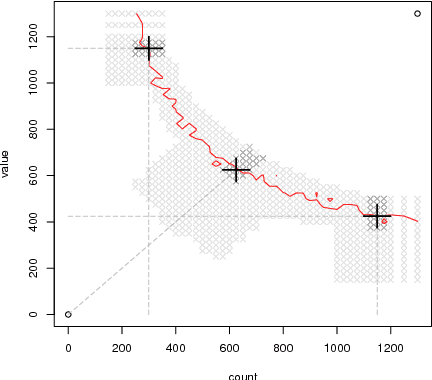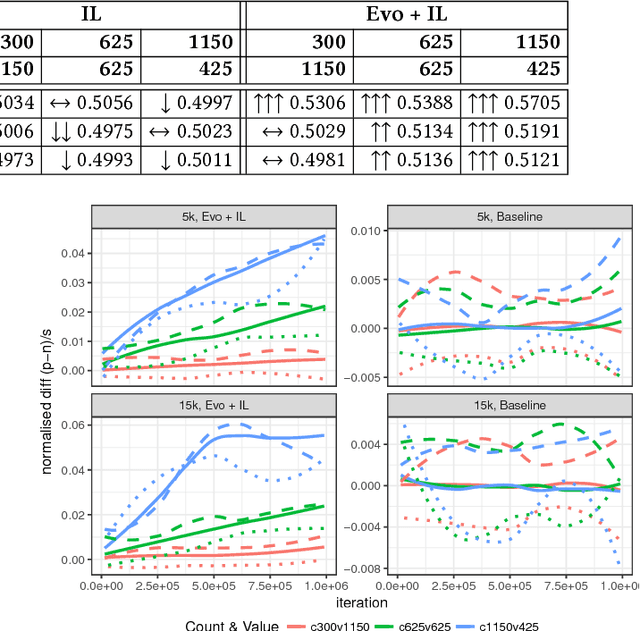Andreas Steyven
An Investigation of Environmental Influence on the Benefits of Adaptation Mechanisms in Evolutionary Swarm Robotics
Apr 20, 2018



Abstract:A robotic swarm that is required to operate for long periods in a potentially unknown environment can use both evolution and individual learning methods in order to adapt. However, the role played by the environment in influencing the effectiveness of each type of learning is not well understood. In this paper, we address this question by analysing the performance of a swarm in a range of simulated, dynamic environments where a distributed evolutionary algorithm for evolving a controller is augmented with a number of different individual learning mechanisms. The learning mechanisms themselves are defined by parameters which can be either fixed or inherited. We conduct experiments in a range of dynamic environments whose characteristics are varied so as to present different opportunities for learning. Results enable us to map environmental characteristics to the most effective learning algorithm.
Security, Privacy and Safety Evaluation of Dynamic and Static Fleets of Drones
Aug 18, 2017



Abstract:Inter-connected objects, either via public or private networks are the near future of modern societies. Such inter-connected objects are referred to as Internet-of-Things (IoT) and/or Cyber-Physical Systems (CPS). One example of such a system is based on Unmanned Aerial Vehicles (UAVs). The fleet of such vehicles are prophesied to take on multiple roles involving mundane to high-sensitive, such as, prompt pizza or shopping deliveries to your homes to battlefield deployment for reconnaissance and combat missions. Drones, as we refer to UAVs in this paper, either can operate individually (solo missions) or part of a fleet (group missions), with and without constant connection with the base station. The base station acts as the command centre to manage the activities of the drones. However, an independent, localised and effective fleet control is required, potentially based on swarm intelligence, for the reasons: 1) increase in the number of drone fleets, 2) number of drones in a fleet might be multiple of tens, 3) time-criticality in making decisions by such fleets in the wild, 4) potential communication congestions/lag, and 5) in some cases working in challenging terrains that hinders or mandates-limited communication with control centre (i.e., operations spanning long period of times or military usage of such fleets in enemy territory). This self-ware, mission-focused and independent fleet of drones that potential utilises swarm intelligence for a) air-traffic and/or flight control management, b) obstacle avoidance, c) self-preservation while maintaining the mission criteria, d) collaboration with other fleets in the wild (autonomously) and e) assuring the security, privacy and safety of physical (drones itself) and virtual (data, software) assets. In this paper, we investigate the challenges faced by fleet of drones and propose a potential course of action on how to overcome them.
 Add to Chrome
Add to Chrome Add to Firefox
Add to Firefox Add to Edge
Add to Edge